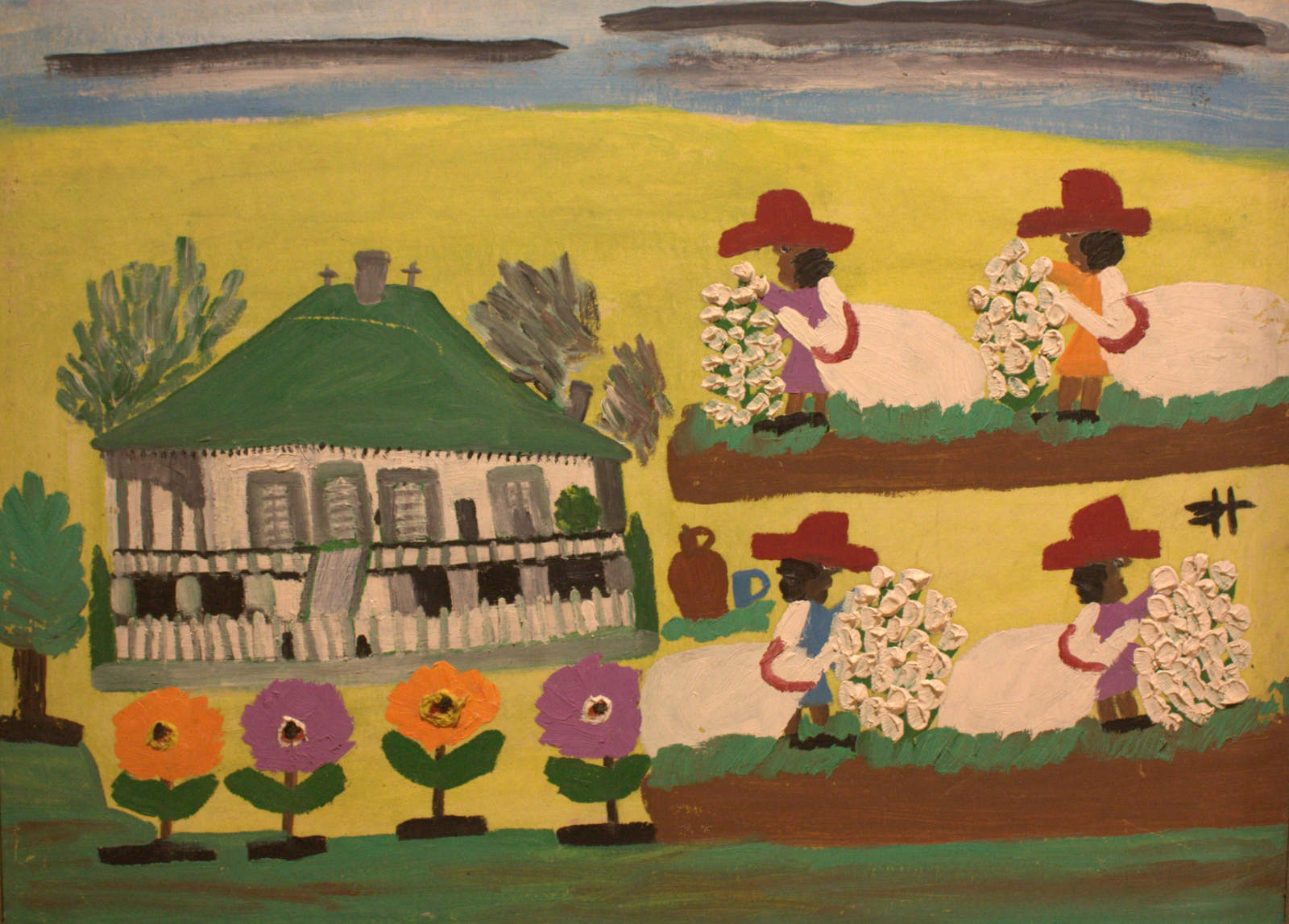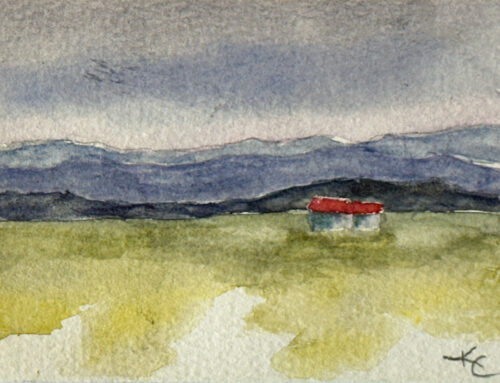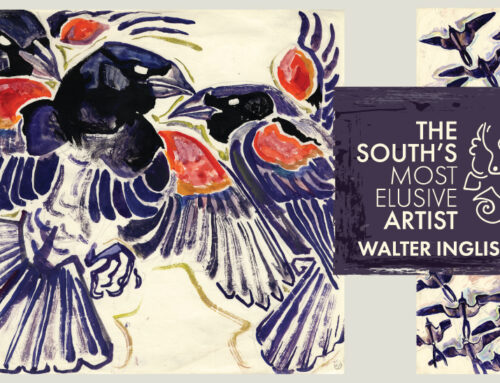After 27 years, Clementine Hunter returns to the galleries of the South Arkansas Arts Center for an extremely comprehensive collection of her works curated by Tom Whitehead, a personal friend and co-author of two books on Hunter’s life and artwork. “Clementine Hunter: The Nolan Collections” is one of the largest exhibitions ever amassed of Hunter’s work and features rarely seen works from the private collections of the Nolan family from Cherokee, Mrs. Theodosia Nolan’s beloved plantation home outside of Natchitoches, Louisiana, and their El Dorado homes. Tom Whitehead will open SAAC’s exhibition with a reception on Friday, September 5, from 6-8pm. The reception and two month exhibition are sponsored by the family of Theodosia Nolan.
Clementine Hunter was a self-taught African-American folk artist from the Cane River region in Louisiana. The granddaughter of slaves, she was born a slave on Hidden Hill plantation. Her father was Irish, and her mother was African American/Native American. She worked as a farm hand and only attended school for 10 days, never learning to read or write. At the age of 15, Hunter moved to Melrose Plantation south of Natchitoches. Hunter has become one of the most well-known self-taught artists, often referred to as the black Grandma Moses. Painting from memory, she is credited as an important social and cultural historian for her documentation of plantation life in the early 20th century, including picking cotton, picking pecans, washing clothes, baptisms, and funerals. Many of her paintings were similar, but each one is unique. Hunter was noted for painting on anything, particularly discarded items such as window shades, jugs, bottles, and gourds and cardboard boxes. She also produced a few quilts with themes depicted in her paintings.
Though she became a hugely respected artist and is today considered a folk art legend, Hunter spent her entire life in (or near) poverty. She rarely titled her works, but would describe what a painting was about, when asked for a title. By the end of her life, her work was being exhibited in museums and sold by dealers for thousands of dollars. Hunter was granted an honorary Doctor of Fine Arts degree by Northwestern State University of Louisiana in 1986.
Hunter lived her entire life in rural northwest Louisiana, never traveling more than 100 miles from home, and her last painting was created one month before her death at age 104. On the outside of the unpainted cabin where she lived was a sign that read, “Clementine Hunter, Artist. 25 cents to Look.” She produced between four and five thousand paintings in her lifetime. The Museum of American Folk Art in Washington, D.C. called Hunter “the most celebrated of all Southern contemporary painters.”
The exhibition will be on display from September 5 through October 31.



